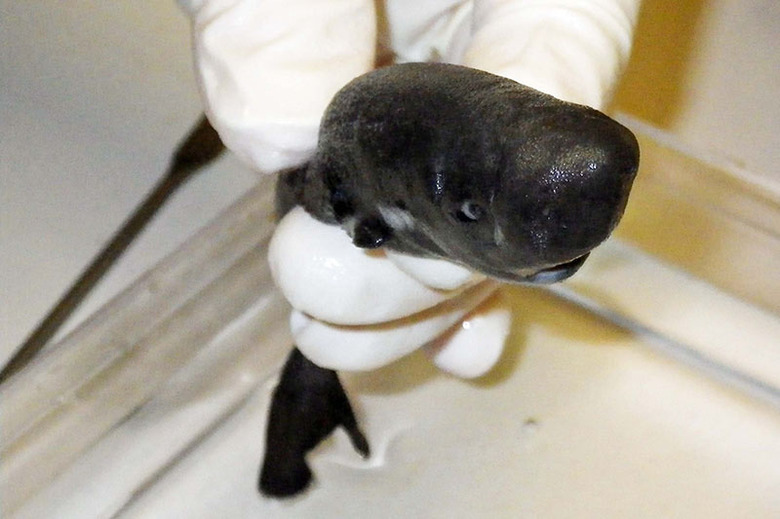Scientists Discovered A New Shark Species That Glows In The Dark
Once you get down deep enough in Earth's oceans, sunlight is hard to come by. But rather than stumble around in the dark in search of food, creatures that live at extreme depths have found ways to make their own light. It's called bioluminescence and it's what gives fireflies their ability to generate brilliant flashes in the dead of night.
Deep in the oceans, sea creatures use this ability for a variety of things, including luring in prey who might see the glow as an easy target only to be met with a set of sharp jaws for their curiosity. A newly-identified species of shark found in the Gulf of Mexico has a light-making system all its own, but it's a whole lot less intimidating than you'd imagine a glow-in-the-dark shark would be.
The creature is a type of pocket shark, of which only two have ever been found. It gets its name from tiny "pockets" along its sides, but it's the bioluminescent properties of the shark that may turn out to be the most interesting.
The shark, which is only just over five inches in length, isn't exactly the scariest thing in the world. The only other pocket shark ever discovered was found way back in the late 1970s. That was an entirely different species of pocket shark, and it had reached maturity at a length of 16 inches. It's unclear how large this new species grows.
The shark, which has been named the American pocket shark after being found in the Gulf of Mexico, has glands that produce bioluminescent fluid. It's also equipped with photophores, which are organs that generate light, giving the animal the ability to glow in the dark.
With only one specimen to study, and not being able to observe it in its natural habitat, it's unclear exactly how the shark uses its glowing features to its advantage.
Some species of deep-sea fish are thought to use bioluminescence to offset the shadow they cast towards predators lurking below. With glowing skin, the fish can blend in with the dim light that penetrates deep into sea, and predators looking up would be at a loss to spot them. For now, we'll have to wait and wonder if this particular pint-sized shark does the same.
